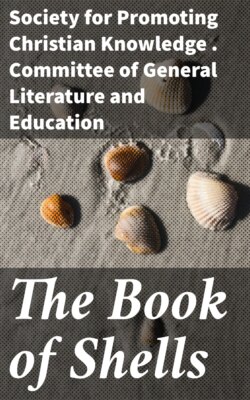Читать книгу The Book of Shells - Society for Promoting Christian Knowledge . Committee of General Literature and Education - Страница 13
На сайте Литреса книга снята с продажи.
The Marble Cone, (Conus marmoreus.)
ОглавлениеLamarck notices no less than 181 recent species of the Cone shell. The Marbled Cone figured below, is found in most of the Asiatic seas, and is not uncommon; it is of a dusky colour, and covered with angular white spots. The section of this shell points out in a remarkable manner the economy and providence of the Creator, so visible in all his works.
Voluta diadema.Conus marmoreus. Columbella mercatoria.
It will be seen on referring to the engraving, that the shell is much thicker in the outward part of its coat than in any other part; and this exceeding thickness is necessary for the protection of the soft body of its inhabitant. In the course of the growth of the animal the shell is enlarged, and that part that was external becomes internal, the last made portion of the shell forming the outer wall; if, therefore, the inner part of the shell retained its original thickness, its weight would become too great for its possessor. To guard against this inconvenience, and this useless waste of material, the creature possesses the power of absorbing so much of the substance of what now becomes the internal portion of its dwelling as is unnecessary for its present use, and of re-depositing the same on the outward wall of its mansion, where strength is most required[1].
The Cones, says Lamarck, are the most beautiful of all the univalve shells; the genus comprises the most valuable and the most remarkable specimens of this family, whether we look at the regularity of their form or the splendour of their colours. The beauty of many, but, above all, the extreme rarity of others, have given them a species of celebrity, and have caused them to be much sought after by collectors.
Oliva porphyria.
The Cones are found in the seas of hot climates, in from ten to twelve fathom water. The animal of the Cones has the head furnished with two tentaculæ, or horns, with the eyes on the summits; they only inhabit salt waters.
The genus Oliva is distinguished from the Cones by the groove or canal which separates the turns of their spire, and by the wrinkles on the columella. The Porphyry Olive is found in the South American Seas, on the Brazilian coast, and is the most beautiful and the largest species of the genus; it is of a flesh colour, with numerous lines of a reddish brown, forming angular figures of various forms, and covered with irregular-formed spots of a red or maroon colour. Its length is nearly four inches. There are nearly seventy species of this beautiful shell.
